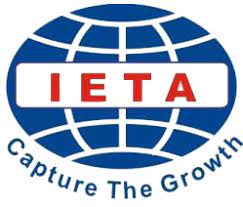Boosting Critical Thinking: A Prominent Aspect to Uphold Learners’ Autonomy in the EFL Classroom
 ), Lulud Oktaviani(2),
), Lulud Oktaviani(2), (1) Universitas Negeri Padang, Padang, West Sumatra
(2) Griffith University Universitas Teknokrat
 Corresponding Author
Corresponding Author
Copyright (c) 2023 Lingua Didaktika: Jurnal Bahasa dan Pembelajaran Bahasa
DOI : https://doi.org/10.24036/ld.v17i2.123970
Full Text:
 Language : en
Language : en
Abstract
This paper clarifies how learners' critical thinking could promote their autonomy in EFL classrooms. The study's findings contain opinions collections of Seventeen undergraduate students from the English Department of Universitas Negeri Padang. they took a Critical Reading course for a semester. This study analyzed toward their responsibilities in learning, confidence in operating their autonomy, and motivation that build up as well assist them in exploring reading texts. The good thing is that they can fully participate in classroom activities and discover themselves enjoy looking for more information about the reading. Students who reach this stage of thinking are believed to be critical and independent.
Keywords
References
Bagheri, N. (2018). Critical Thinking and Autonomy in Speaking Ability: A Case Study.International Journal on Studies in English Language and Literature (IJSELL), vol 6, no. 5, 2018, pp. 73-83. doi:http://dx.doi.org/10.20431/2347-3134.0605009.
Begum, Jahanara. (2019). Learner Autonomy In EFL/ESL Classrooms In Bangladesh: Teachers’ Perceptions And Practices.International Journal of Language Education, Vol. 3, No. 1, 2019, pp. 12-21. https://doi.org/10.26858/ijole.v1i1.6397
Connolly M. (2000). What we think we know about critical thinking. CELE Journal, 8. Retrieved from http://www.asiau.ac.jp/english/cele/articles/Connolly_Critical_Thinking.htm.
Deci, E. L., & Ryan, R. M. (2016). Optimizing students’ motivation in the era of testing and pressure: A self-determination theory perspective. In Building autonomous learners (pp. 9-29). Springer, Singapore.
Facione, P. A. 1990. Critical thinking: A statement of expert consensus for purposes of educational assessment and instruction. ERIC Report Research. Retrieved from http://eric.ed.gov/?id=ED315423.
Harizaj, M., & Hajrulla, V. (2017). Fostering Learner’s Critical Thinking Skills in EFL: Some Practical Activities. European Scientific Journal, ESJ, 13(29), 126. https://doi.org/10.19044/esj.2017.v13n29p126
Kabilan M. K. (2000). Creative and critical thinking in language classrooms. The Internet TESL Journal, 6 (6). Retrieved from http://iteslj.org/Techniques/Kabilan-CriticalThinking.html
Little, D. (2000). Autonomy and autonomous learners. Routledge encyclopaedia of language teaching and learning, 69-72.
McKernan, J. (1993). Perspectives and imperatives – some limitations of Outcomes-based Education. Journal of Curriculum and Supervision, 8 (4): 343–353.
Meyer, B., Haywood, N., Sachdev, D., & Faraday, S. (2008). What is independent learning and what are the benefits for students. Department for Children, Schools and Families Research Report, 51
Myers, B. E., & Dyer, J. E. (2006). The consequences of student learning style on critical thinking skill. Journal of Agricultural Education, 4(7), 43-52
Nizaruddin, Kusmaryono I (2023). How are Critical Thinking Skills Related to Students’ Self-regualtion and Independent Learning?. Pegem Journal of Education and Source of support: NilConflict of interest: None.Received:29.08.2022DOI: 10.47750/pegegog.13.04.10Instruction, Vol. 13, No. 4, 2023, 85-92
Nosratinia, M., &Zaker, A. (2013). Autonomous learning and critical thinking: Inspecting the association among EFL learners. Paper presented at the First national Conference on Teaching English, Literature, and translation, Shiraz University, Shiraz, Iran. Retrieved from http://www.civilica.com/Paper-TELT01-TELT01_226.html
Nosratinia, M., Asiabar, M. G., &Sarabchian, E. (2014). The relationship between Iranian EFL learners’ language learning strategies and critical thinking. International Journal of Language and Applied Linguistics World, 5(2), 335-345.
Nosratinia, Mania & Zaker, Alireza. (2014). Metacognitive Attributes and Liberated Progress: The Association Among Second-Language Learners' Critical Thinking, Creativity, and Autonomy. SAGE Open. 4. 1-10. 10.1177/2158244014547178.
Nuraini, Ni Luh Sakinah, Cholifah, Putri. S, Mahanani, Putri & Meidina, Andini. M. (2020) Critical Thinking and Reflektive Thinking Skills in Elementary School Learning. Proceedings of the 2nd Early Childhood and Primary Childhood Education. Atlantis Press.
Oxford, R. L. (2002). Language learning strategies in a nutshell: Update and ESL suggestions. Methodology in language teaching: An anthology of current practice, 4(3), 124-132.
Paul, R.W. (1985). The Critical Thinking Movement: A Historical Perspective. National Forum, 65(1), 2-3, 32.
Paul, R. & Elder, L. 2001. The miniature guide to critical thinking: Concept and tools. Journal of the Foundation for Critical Thinking. Retrieved from http://www.criticalthinking.org.
Phan, H. P. (2010). Critical thinking as a self-regulatory process component in teaching and learning. Psicothema, 22(2), 284–292. https://www.redalyc.org/pdf/727/72712496017.pdf
Pemberton, R., & Nix, M. (2012). Practices of critical thinking, criticality and learner autonomy. In K. Irie & A. Stewart (Eds.), Proceedings of the JALT Learner Development SIG Realizing Autonomy Conference, [Special issue] Learning Learning, 19(2), 79-94. Retrieved from http://ld-sig.org/LL/ 19two/pemberton-nix.pdf
Raya, M. J., Lamb, T., & Vieira, F. (2007). Pedagogy for autonomy in language education in Europe: Towards a framework for learner and teacher development. Dublin: Authentik
Saeed, Muhammad Amir (2021). Learner Autonomy: Learners’ Perceptions on Strategies to Achieve Autonomy in an EFL Classroom. International Journal of Linguistics, Literature and Translation. Vol 4 Issue 3 pp 150-158.https://doi.org/10.32996/ijllt.2021.4.3.17
Scharle, A., & Szabo, A. (2007). Learner autonomy: A guide to developing learner responsibility. Ernst Klett Sprachen
Siegle, H. (1980). Critical thinking as an educational ideal. Educational forum, 45, 1.
Taylor, W. (2002). Promoting critical thinking through classroom discussion. In Fuiks, C. & Clark, L. (Eds.), Teaching and Learning in Honors (2 nd ed). Lincoln: National Collegiate Honors Council.
Varías, I.,& Callao, M.(2022). Autonomous learning strategies: critical and creative thinking in primary education. Rev. innova educ. (2022). Vol 4 No 3 pp. 115-125. https://doi.org/10.35622/j.rie.2022.03.007.en
 Article Metrics
Article Metrics
 Abstract Views : 284 times
Abstract Views : 284 times
 PDF Downloaded : 64 times
PDF Downloaded : 64 times
Refbacks
- There are currently no refbacks.
Copyright (c) 2023 Lingua Didaktika: Jurnal Bahasa dan Pembelajaran Bahasa

This work is licensed under a Creative Commons Attribution-NonCommercial 4.0 International License.









